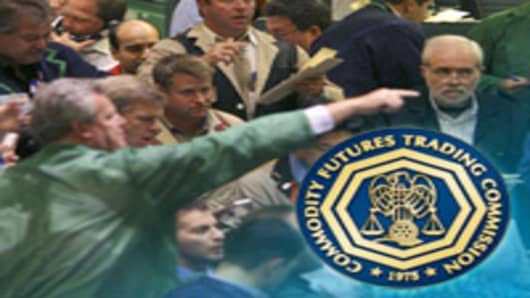While commodity market regulators regularly look for manipulative behavior, the C.F.T.C. took the unusual step in recent weeks of publicly confirming that it was conducting investigations looking for illegal activity in both the energy and agricultural markets.
“Concern about manipulation is not misplaced,” said Patrick Westhoff, an economist at the University of Missouri’s Food and Agricultural Policy Research Institute. “But speculation doesn’t equal manipulation, and I am concerned that there’s been a confusion between the two concepts.”
The stage of the speculation that is alarming Washington is the commodity futures market, which trades a financial derivative called a futures contract, an agreement for the future delivery of a fixed amount of a commodity at a certain price. The prices at which these futures contracts change hands are the benchmark for pricing commodities around the world.
In essence, speculators are the only voluntary players in the commodity futures markets. They could use their billions to dabble in currency markets or buy distressed real estate or pile up Treasury bonds.
But farmers, miners, oil producers and all the other players engaged in commodity production and consumption — the so-called commercial players — pretty much have to be there. There just are not many other places they can hedge the price risks that arise in their commodity-based businesses.
So speculators become the ballast in the market, making the contrary trades, taking on the risks the hedgers want to shed, reacting quickly when news jolts the markets and, most important, creating liquidity by pouring in enough money to allow everyone to make very large trades quickly without causing wild price swings.
Liquidity is, in effect, the hostess gift that speculators bring to every market party, and without the capital poured into energy markets by institutional investors, prices may well be far higher and more volatile than they are, said Philip K. Verleger Jr., an economist and energy policy consultant who testifies frequently before Congress on energy issues.
In the last five years, hundreds of billions of dollars have flowed into the commodity futures markets, both from traditional institutions — hedge funds, pension funds and investment bank trading desks, for example — and from the newer commodity-linked index funds and exchange traded funds, which track various commodity market indexes.
Mr. Verleger said he strongly disagrees with the view that these new speculators are pushing up the price of oil and other commodities. “In fact, they have at a minimum reduced price volatility and quite possibly contributed to a lower price level than would have been obtained had they been barred from the commodity markets,” he said.
Paul Horsnell, a managing director and head of commodity research at Barclays Capital in London, said he believes that Washington’s hostility reflects, in part, a misunderstanding of the strategy used by many of the new investors.
Critics — including Michael W. Masters, a portfolio manager whose testimony last month in Washington was praised by Senator Lieberman — complain that these new investors are piling in only on the buy side, thereby tilting the market toward higher prices.
The actual picture is more complex, Mr. Horsnell said. Many institutional investors constantly adjust their positions to maintain a fixed percentage of their portfolio in commodities, he said.
Thus, a pension fund that wants to put no more than 2 percent of its assets in commodities will have to sell some of its stake when its value rises above that percentage limit.
So, as in other markets, these investors “are stabilizing forces because when the asset goes up in value, they sell some to put their portfolios back into balance,” he said.
But the sheer size of the money flowing into commodity futures has become the most important fact about it.
According to Barclays research, about $200 billion in managed assets was invested in commodities at the end of 2007 — up from barely measurable levels just seven years ago. Latest estimates suggest that figure rose to $230 billion in the first four months of this year, but at least half of that growth came from rising commodity prices, not new money flowing in, Mr. Horsnell said.
He said that this entire investment stake is dwarfed by the amount of money invested in, say, ExxonMobil. But the commodity markets are much smaller than the equities markets, and this flood of new capital is a once-in-a-lifetime occurrence.
“Speculators have seized control of these markets,” Senator Levin said.
Lawmakers know that markets need speculators, the senator said, but are using “speculation” simply as shorthand for their real target of concern, which is “excessive speculation.”
But while federal law orders commodity market regulators to prevent “excessive speculation,” the law does not define the term — and neither has Congress. “That’s what regulators are for,” Senator Levin said. “It’s up to them to put some flesh on that term.”
Senator Lieberman disagreed, saying Congress must clarify the standard for regulators to enforce. America must not hang a sign on its commodity markets saying, “no speculators allowed,” he said. “There is a difference between speculation and excessive speculation.”
But Congress has to “define and legislate that definition better,” he added. “We can’t just say, as Justice Potter Stewart once said of pornography, that we know it when we see it.”



